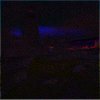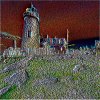Darren
Member
- Messages
- 9
- Likes
- 1
I am new to photoshop and am curious to see what quality setting others use when saving photos as jpeg.
The size difference between saving at 10 and 12 is almost 3 times the size, I see no quality loss when saving at quality 10.
I have some photos that are original size of around 5mb, after editing the photos saving at quality 10 gives a file size of around 5mb while quality 12 a file size of around 12mb-15mb.
The size difference between saving at 10 and 12 is almost 3 times the size, I see no quality loss when saving at quality 10.
I have some photos that are original size of around 5mb, after editing the photos saving at quality 10 gives a file size of around 5mb while quality 12 a file size of around 12mb-15mb.





